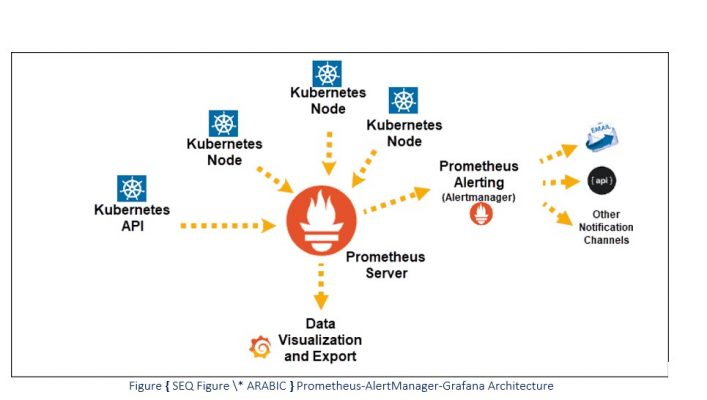Table of Contents
Introduction
As Kubernetes continues to be the go-to platform for managing containerized applications at scale, efficient scaling becomes a critical aspect of its success. In recent years, a powerful technology called eBPF (extended Berkeley Packet Filter) has emerged, offering new possibilities for optimizing and scaling Kubernetes deployments. In this article, we will explore what eBPF is, its core capabilities, and its implications for scaling Kubernetes environments.
By leveraging eBPF, operators gain granular observability, real-time insights, and the ability to optimize resource allocation during scaling operations. eBPF’s programmability and versatility make it suitable for a range of scaling use cases, including autoscaling, advanced networking, dynamic tracing, and security enforcement. As a result, eBPF has quickly gained traction in the Kubernetes ecosystem as a game-changing technology for scaling deployments efficiently and effectively.
Understanding eBPF
In order to understand its possibilities, it is first important to learn what is eBPF. eBPF is a revolutionary technology that originated in the Linux kernel and has now become a versatile framework for programmatically extending and enhancing the kernel’s functionality. Originally designed for network packet filtering, eBPF has evolved to become a powerful tool for dynamic tracing, monitoring, and performance optimization.
At its core, eBPF provides a secure and efficient way to run sandboxed programs within the kernel. These programs can be written in high-level languages such as C or Go and are compiled into eBPF bytecode, which is then loaded into the kernel for execution. eBPF programs have fine-grained control over network packets, system calls, and other kernel events, enabling deep visibility and customization of kernel behavior.
Scaling Kubernetes with eBPF
Scaling Kubernetes deployments efficiently is crucial for meeting the demands of modern applications. eBPF empowers operators with enhanced observability, performance optimization, and advanced networking capabilities to achieve efficient scaling.
Performance Optimization
eBPF allows operators to dynamically trace and profile Kubernetes workloads, providing deep insights into their behavior. By attaching eBPF programs to specific events or kernel functions, operators can collect metrics, identify performance bottlenecks, and optimize resource utilization. eBPF-powered profiling enables granular observability, helping operators fine-tune their applications and scale efficiently.
Here’s a code snippet demonstrating how eBPF can be used for dynamic tracing and profiling in a Kubernetes environment:
#include <linux/bpf.h>
#include <linux/ptrace.h>
#include <linux/sched.h>
SEC("kprobe/k8s_trace_workload")
int trace_k8s_workload(struct pt_regs *ctx)
{
struct task_struct *task = (struct task_struct *)bpf_get_current_task();
u64 start_time = bpf_ktime_get_ns();
// Perform custom workload tracing and profiling
// ...
u64 end_time = bpf_ktime_get_ns();
u64 duration = end_time - start_time;
bpf_trace_printk("Workload execution time: %llu ns\n", duration);
return 0;
}
In this example, we define an eBPF program that attaches to the k8s_trace_workload kernel event, which represents the execution of a Kubernetes workload. The program captures the start time of the workload execution using bpf_ktime_get_ns(). Operators can implement custom workload tracing and profiling logic within the program to collect metrics, identify performance bottlenecks, or apply specific optimizations. Once the workload completes, the program calculates the duration by subtracting the start time from the end time and prints a trace message with the execution time.
By deploying this eBPF program in the Kubernetes environment, operators can gain deep insights into the execution time of specific workloads and gather information about their behavior and performance. This enables them to identify potential performance bottlenecks, optimize resource utilization, and fine-tune their applications for efficient scaling. eBPF-powered profiling provides granular observability, allowing operators to make data-driven decisions and optimize the overall performance of their Kubernetes deployments.
Advanced Networking
Kubernetes networking can be complex, especially in large-scale deployments. eBPF brings advanced networking capabilities by enabling the creation of custom networking solutions. With eBPF, operators can implement load balancing, network security, and traffic shaping directly in the kernel, bypassing user-space networking overhead. This enhances the scalability and performance of Kubernetes networking, particularly in scenarios where high throughput and low latency are critical.
Here’s a code snippet demonstrating how eBPF can be used for advanced networking in a Kubernetes environment:
#include <linux/bpf.h>
#include <linux/ptrace.h>
SEC("kprobe/k8s_networking")
int trace_k8s_networking(struct pt_regs *ctx)
{
u32 source_ip = PT_REGS_PARM1(ctx);
u32 destination_ip = PT_REGS_PARM2(ctx);
// Perform custom networking operations, such as load balancing or traffic shaping
// ...
bpf_trace_printk("Network traffic: Source IP: %u, Destination IP: %u\n", source_ip, destination_ip);
return 0;
}
By deploying this eBPF program in the Kubernetes environment, operators can leverage advanced networking capabilities directly in the kernel. This allows them to implement custom networking solutions, such as load balancing or traffic shaping, without relying on user-space networking overheads.
Dynamic Tracing and Observability
eBPF’s dynamic tracing capabilities enable operators to trace and collect detailed information about Kubernetes workloads and infrastructure components. With eBPF, operators can capture low-level kernel events, system calls, and network packets, providing real-time insights into system behavior. This level of observability helps one identify performance issues, debug problems, and optimize resource allocation during scaling operations.
Here’s a small example of using eBPF for dynamic tracing in a Kubernetes environment:
#include <linux/sched.h>
#include <linux/fs.h>
#include <linux/bpf.h>
#include <linux/ptrace.h>
SEC("kprobe/do_sys_open")
int trace_sys_open(struct pt_regs *ctx)
{
char *filename = (char *)PT_REGS_PARM1(ctx);
struct task_struct *task = (struct task_struct *)bpf_get_current_task();
u32 pid = bpf_get_current_pid_tgid() >> 32;
bpf_trace_printk("Opening file %s by PID %d\n", filename, pid);
return 0;
}
In this example, we define an eBPF program that attaches to the do_sys_open kernel function, which is responsible for opening files. Whenever this function is called, the eBPF program is triggered, and it captures the filename being opened, as well as the PID of the process performing the operation. It then prints a trace message using ‘bpf_trace_printk’.
By compiling and loading this eBPF program into the kernel, operators can dynamically trace file open events in real time. This level of visibility allows for fine-grained monitoring and analysis of system behavior during scaling operations. Operators can identify performance bottlenecks, track resource usage, and gain valuable insights for optimizing their Kubernetes deployments.
Security and Resource Control
eBPF programs can enforce fine-grained security policies and resource controls in Kubernetes. By leveraging the eBPF’s ability to intercept system calls and network events, operators can enforce access controls, implement intrusion detection mechanisms, and protect Kubernetes deployments from malicious activities. The eBPF’s flexibility allows for the development of custom security solutions tailored to the specific requirements of Kubernetes environments.
Extensibility and Future Innovations
An eBPF’s programmability and active developer community contribute to its extensibility and continuous innovation. As the eBPF ecosystem evolves, new tools, libraries, and frameworks are emerging, further enhancing its capabilities. This opens up exciting possibilities for scaling Kubernetes environments in novel ways, such as dynamic workload orchestration, automatic scaling based on custom metrics, and adaptive resource allocation.
Use Cases of eBPF in Kubernetes Scaling
The versatility of eBPF makes it applicable to various use cases when it comes to scaling Kubernetes deployments. Here are some key use cases where eBPFs can significantly impact scaling.
Autoscaling
eBPF can be leveraged to collect real-time metrics and insights about the workload and infrastructure. By dynamically monitoring resource usage, network traffic, and application performance, operators can develop intelligent auto scaling mechanisms. These mechanisms can automatically adjust the number of replicas based on the workload demand, ensuring optimal resource allocation and efficient scaling.
Network Load Balancing
In Kubernetes deployments, distributing network traffic evenly among backend services is crucial for scalability and reliability. eBPF enables operators to implement dynamic load balancing at the kernel level, allowing for efficient distribution of network requests across service replicas. This offloads the load-balancing tasks from the application layer, improving performance and enabling seamless scaling.
Network Performance Optimization
High network performance is essential for scaling Kubernetes applications effectively. eBPF can be used to analyze and optimize network flows, identify bottlenecks, and implement traffic-shaping techniques. By applying eBPF-powered optimizations, operators can ensure low-latency communication between pods, efficient utilization of network resources, and improved overall network performance during scaling operations.
Here’s a code snippet demonstrating how eBPF can be used for network performance optimization in a Kubernetes environment:
#include <linux/bpf.h>
#include <linux/ptrace.h>
SEC("kprobe/k8s_network_optimization")
int trace_k8s_network_optimization(struct pt_regs *ctx)
{
u32 source_port = PT_REGS_PARM1(ctx);
u32 destination_port = PT_REGS_PARM2(ctx);
u64 timestamp = bpf_ktime_get_ns();
// Perform custom network optimization operations, such as latency measurement or traffic shaping
// ...
bpf_trace_printk("Network optimization: Source Port: %u, Destination Port: %u, Timestamp: %llu\n", source_port, destination_port, timestamp);
return 0;
}
By deploying this eBPF program in the Kubernetes environment, operators can leverage eBPF to optimize network flows and improve network performance during scaling operations.
Resource Monitoring and Control
eBPF provides granular visibility into resource usage at the kernel level, allowing operators to monitor and control resource allocation in real time. By leveraging eBPF, operators can identify resource-intensive processes, detect memory leaks, and optimize CPU and memory utilization. This level of resource monitoring and control enables efficient scaling by ensuring optimal resource allocation across the Kubernetes cluster.

Future Directions and Community Development
The eBPF ecosystem is continuously evolving, driven by an active and vibrant community of developers and enthusiasts. As the demand for scaling Kubernetes deployments increases, further advancements and enhancements in eBPF are anticipated. Here are some future directions and areas of community development for eBPF:
Tooling and Libraries
The development of additional tooling and libraries around eBPF will provide operators with more options and capabilities for scaling Kubernetes. This includes the creation of specialized eBPF-based tools for metrics collection, tracing, and performance analysis.
Standardization and Adoption
As eBPF gains momentum, efforts toward standardization and widespread adoption will play a crucial role. Establishing standards and best practices for eBPF usage in Kubernetes scaling will ensure interoperability and facilitate seamless integration with existing tools and frameworks.
Enhanced Security Capabilities
eBPF’s flexibility opens doors for further advancements in security-related use cases. The community is actively exploring ways to leverage eBPF for runtime security, intrusion detection, and compliance monitoring in Kubernetes deployments.
Collaboration with Kubernetes Community
Continued collaboration between the eBPF and Kubernetes communities will lead to innovations and integrations that specifically address scaling challenges. This collaboration will foster the development of eBPF-powered solutions tailored to the needs of Kubernetes users.
By embracing these future directions and engaging with the eBPF community, operators can stay at the forefront of eBPF’s evolution and leverage its full potential for scaling Kubernetes deployments.
Conclusion
eBPF is a game-changing technology for optimizing and scaling Kubernetes deployments. With its programmability, observability features, advanced networking capabilities, and security enhancements, eBPF offers new possibilities for fine-tuning performance, enhancing scalability, and ensuring efficient resource utilization.
By leveraging eBPF, operators can gain deep visibility into their Kubernetes environments, make informed decisions based on real-time insights, and optimize their applications and infrastructure for optimal scaling. Embrace eBPF and unlock its potential to supercharge your Kubernetes scaling capabilities.

